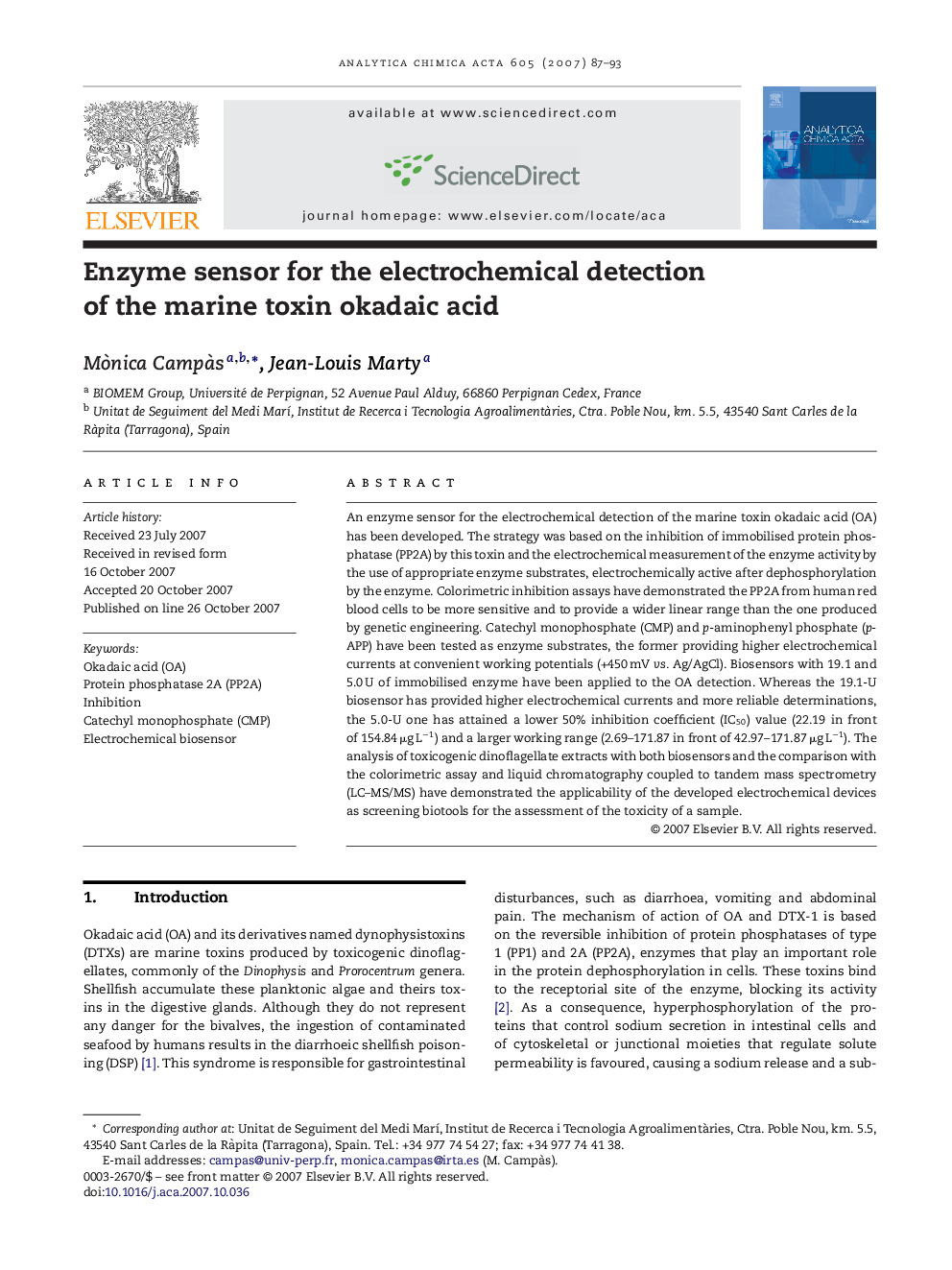| کد مقاله | کد نشریه | سال انتشار | مقاله انگلیسی | نسخه تمام متن |
|---|---|---|---|---|
| 1170170 | 960668 | 2007 | 7 صفحه PDF | دانلود رایگان |

An enzyme sensor for the electrochemical detection of the marine toxin okadaic acid (OA) has been developed. The strategy was based on the inhibition of immobilised protein phosphatase (PP2A) by this toxin and the electrochemical measurement of the enzyme activity by the use of appropriate enzyme substrates, electrochemically active after dephosphorylation by the enzyme. Colorimetric inhibition assays have demonstrated the PP2A from human red blood cells to be more sensitive and to provide a wider linear range than the one produced by genetic engineering. Catechyl monophosphate (CMP) and p-aminophenyl phosphate (p-APP) have been tested as enzyme substrates, the former providing higher electrochemical currents at convenient working potentials (+450 mV vs. Ag/AgCl). Biosensors with 19.1 and 5.0 U of immobilised enzyme have been applied to the OA detection. Whereas the 19.1-U biosensor has provided higher electrochemical currents and more reliable determinations, the 5.0-U one has attained a lower 50% inhibition coefficient (IC50) value (22.19 in front of 154.84 μg L−1) and a larger working range (2.69–171.87 in front of 42.97–171.87 μg L−1). The analysis of toxicogenic dinoflagellate extracts with both biosensors and the comparison with the colorimetric assay and liquid chromatography coupled to tandem mass spectrometry (LC–MS/MS) have demonstrated the applicability of the developed electrochemical devices as screening biotools for the assessment of the toxicity of a sample.
Journal: Analytica Chimica Acta - Volume 605, Issue 1, 12 December 2007, Pages 87–93